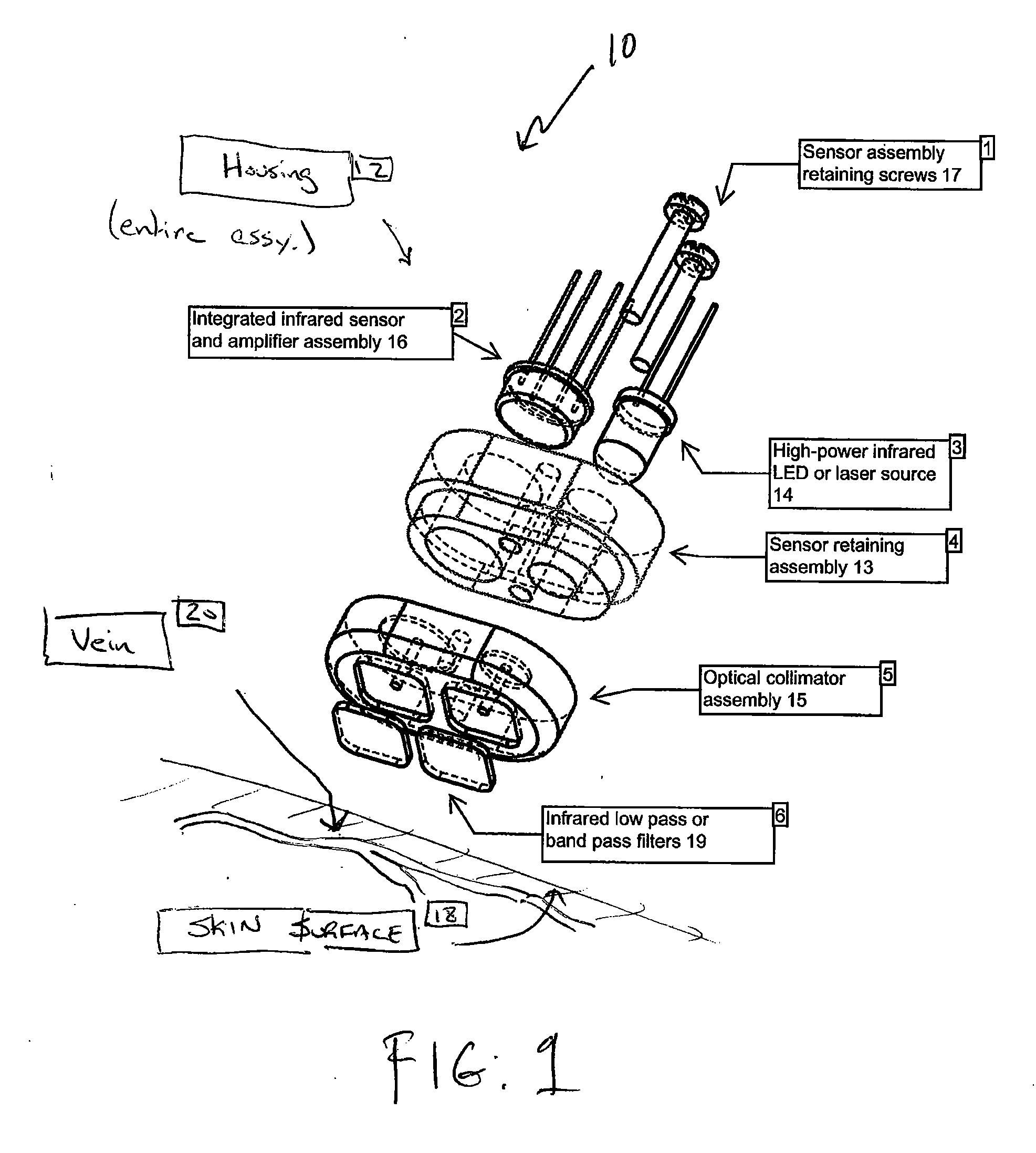Vein locating device for vascular access procedures
a vein locating and vein technology, applied in the field of vein locating or vein visualization devices, can solve the problems of difficult transport, difficult use, and difficult intravenous (iv) access, and achieve the effect of improving the ability to detect near-surface veins
- Summary
- Abstract
- Description
- Claims
- Application Information
AI Technical Summary
Benefits of technology
Problems solved by technology
Method used
Image
Examples
Embodiment Construction
[0026]In one embodiment, as shown in FIG. 1, the vein-locating device 10 of the present invention preferably includes a housing 12 that contains an optical source 14 and an optical detector and amplifier assembly 16, which are adapted to be placed against or near the surface 18 of a patient's skin. In a preferred embodiment, the optical source 14 is a NIR source and the optical detector 16 is a NIR detector.
[0027]The housing 12 includes a sensor retaining assembly 13 and an optical collimator assembly 15 for retaining the optical source 14 and the optical detector 16. The housing 12 is held together with suitable fasteners, such as screws 17. The housing 12 further includes low-pass or band-pass filters 19, as explained further below.
[0028]The optical source 14 and the optical detector 16 are preferably oriented such that they are perpendicular to the surface 18 of the patient's skin and separated by several mm distance. When the optical source 14 (such as a NIR source) is activated...
PUM
 Login to View More
Login to View More Abstract
Description
Claims
Application Information
 Login to View More
Login to View More - R&D
- Intellectual Property
- Life Sciences
- Materials
- Tech Scout
- Unparalleled Data Quality
- Higher Quality Content
- 60% Fewer Hallucinations
Browse by: Latest US Patents, China's latest patents, Technical Efficacy Thesaurus, Application Domain, Technology Topic, Popular Technical Reports.
© 2025 PatSnap. All rights reserved.Legal|Privacy policy|Modern Slavery Act Transparency Statement|Sitemap|About US| Contact US: help@patsnap.com



